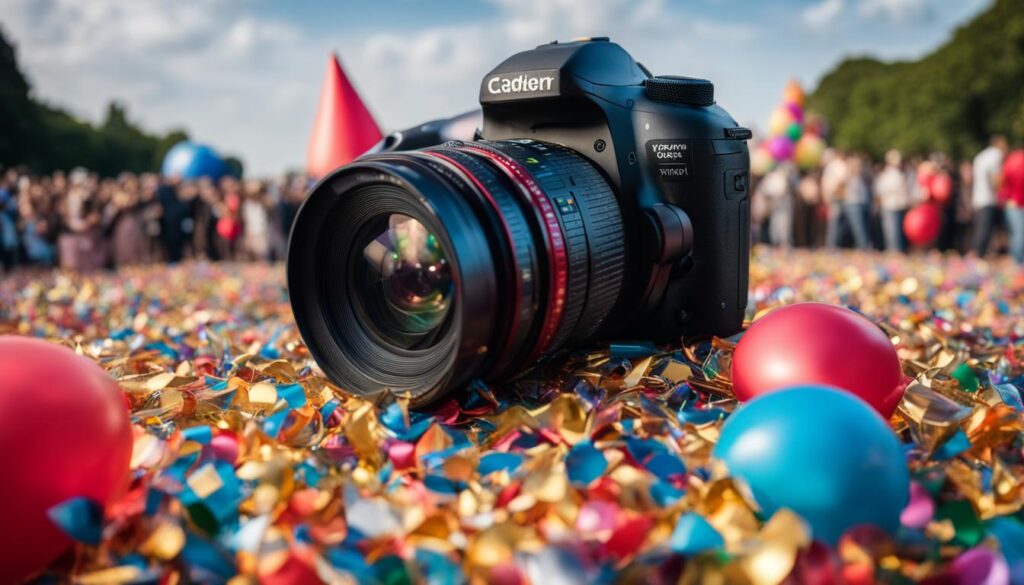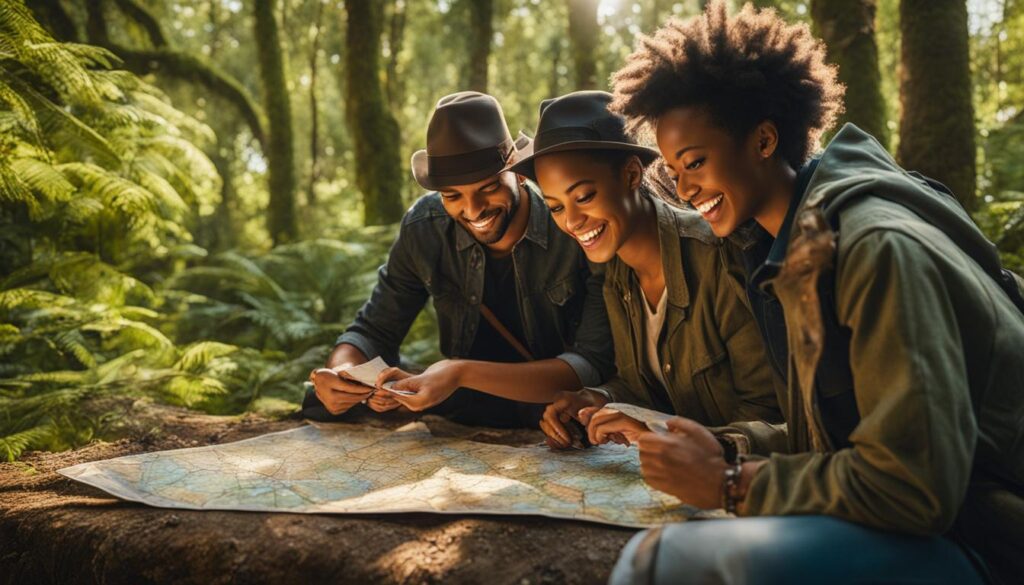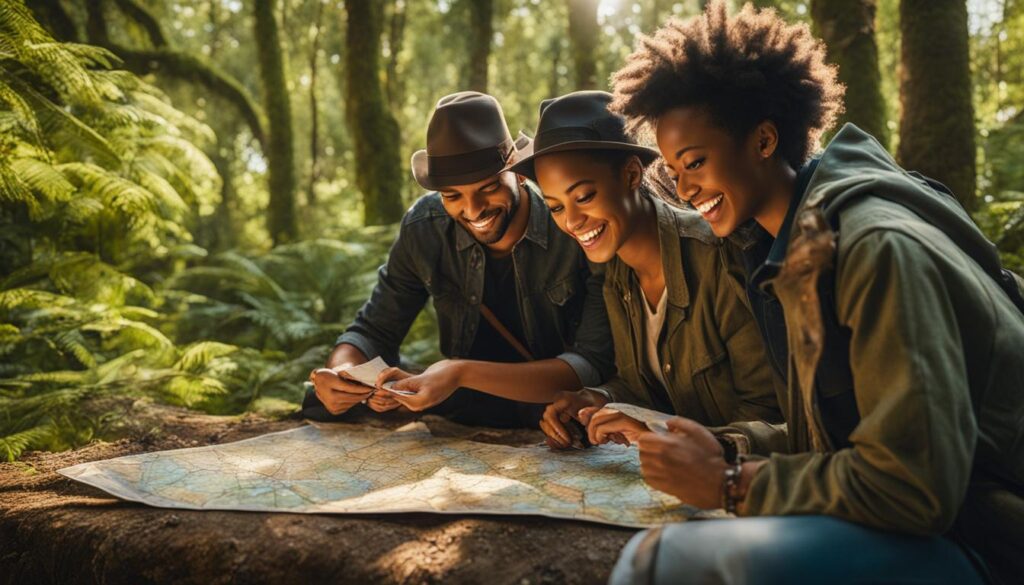We may earn money or products from the companies mentioned in this post.
Event photography is an exciting and challenging field that requires careful planning and skillful execution. Whether you’re capturing a wedding, corporate event, or social gathering, the key to success is preparation. In this ultimate guide, we’ll share essential tips and techniques that will help you plan and execute flawless event photography.
In this section, we will introduce you to event photography planning, exploring the benefits and techniques to help you achieve remarkable results. From preparing your equipment to crafting shot lists and mastering photography techniques, we’ll equip you with the skills and knowledge you need to capture stunning images that truly tell the story of the event.
Key Takeaways:
- Event photography planning is crucial for capturing successful images.
- Proper equipment preparation is key to capturing breathtaking photos.
- Shot lists tailored to the event can help anticipate key moments and candid shots.
- Mastering techniques such as poses and different lighting techniques will help enhance your skills.
- Overcoming low-light and crowded conditions is important for handling challenging situations.
Understanding the Importance of Event Photography Planning
Event photography is all about capturing the essence of the occasion. But how can you ensure that every critical moment is captured without any hiccups? The answer lies in proper event photography planning. Here, we will highlight the significance of creating a checklist, shotlist, and generating creative ideas to make your event photography successful.
The Event Photography Checklist
An event photography checklist is a fundamental part of the planning process. It ensures that you have all the necessary equipment and materials for the event. Before the event, create a checklist outlining everything you need, such as cameras, lenses, batteries, memory cards, and lighting equipment. Cross-check each item on the list to ensure you have everything you need before heading to the event.
The Event Photography Shotlist
A shotlist details the specific photographs you need to capture. It should include essential shots, such as group photos, candid shots, and detail shots. Customize your shotlist according to the type of event you are photographing, such as a wedding or corporate event. A shot list ensures you don’t miss key moments during the event, providing a comprehensive collection of images in the end.
Generating Creative Event Photography Ideas
Event photography should not be limited to just capturing the standard shots. Think outside the box and create unique photography ideas. For instance, try capturing candid moments that are not usually seen by everyone, or experiment with different angles to add diversity to your images. You can also create a photo booth or a designated area for taking photos of guests.
Remember, the key to successful event photography is proper planning. Take the time to create a checklist, prepare a shot list, and generate creative ideas. This will ensure that you have all the necessary tools and techniques to capture the essence of the event.
Preparing Your Equipment for Event Photography
Properly preparing your equipment is essential to ensure high-quality event photography that meets your clients’ expectations. Here are some event photography best practices to consider:
Bring Backup Equipment
Always bring backup equipment to your event. This can include additional cameras, lenses, memory cards, and batteries. Murphy’s Law dictates that anything that can go wrong will go wrong, and having backup equipment ensures you won’t miss any crucial shots.
Choose the Right Lens
The lens you choose can significantly impact the quality of your event photographs. Consider the lighting conditions, the size of the venue, and the type of event you’re shooting when selecting the lens for your camera. A wide-angle lens is ideal for crowded spaces while a zoom lens is perfect for capturing close-up shots from a distance.
Master Your Flash Techniques
Using the right flash techniques can make a significant difference in the quality of your event photographs. Experiment with bouncing flash off walls and ceilings to achieve a softer, more natural look. Avoid direct flash as it can create unflattering shadows and harsh lighting.
Carry Essential Accessories
In addition to your camera and lenses, you should also carry essential accessories such as a tripod or monopod, a camera bag, lens cleaning tools, and a reflector. These items can help you capture sharper shots, keep your gear safe, and enhance the quality of your images.
Remember, the more prepared you are, the better your event photographs will turn out.
Crafting a Shotlist for Different Event Types
Creating a shotlist is a crucial step in event photography planning, as it helps you anticipate and capture all the essential moments of an event. A shotlist is a document that outlines specific shots you want to take during the event, ensuring you don’t miss any important shot or angle. To create a comprehensive shotlist, consider the type of event you will be photographing, the client’s needs, and the mood you want to convey through the images.
Below are some event photography shotlist ideas for different types of events:
| Type of Event | Shotlist Ideas |
|---|---|
| Wedding |
|
| Corporate Event |
|
| Birthday Party |
|
Remember to be flexible with your shotlist and don’t feel obliged to stick to it rigidly. Take advantage of any spontaneous moments or unexpected photo opportunities that may arise.
Moreover, don’t forget to discuss the shotlist with your client and take their suggestions and preferences into account. By working together, you can create a shotlist that meets their expectations and captures the essence of the event.
Event Photography Ideas
In addition to creating a shotlist, you can also generate event photography ideas that add a touch of creativity and uniqueness to your images. Some event photography ideas include:
- Use props to create a fun and playful atmosphere, especially in birthday parties and other casual events.
- Experiment with different angles and perspectives, such as shooting from above or below, to add depth and interest to your photos.
- Focus on capturing the emotions and interactions between the guests, rather than just taking posed shots.
- Play with lighting to create a mood that matches the event, such as using warm tones for romantic weddings or cool tones for corporate events.
By incorporating these event photography ideas, you can elevate your images and create a unique experience for your clients.
Event Photography Techniques
To capture stunning event photos, you need to master various event photography techniques that help you take advantage of lighting, composition, and other factors. Some event photography techniques include:
- Using a fast shutter speed and burst mode to capture fast-paced events, such as sports and live performances.
- Using the rule of thirds to create balanced and aesthetically pleasing compositions.
- Using shallow depth of field to blur the background and draw attention to the subject.
- Using ambient lighting and flash to balance the exposure and add depth to your images.
Experiment with these event photography techniques and find the ones that work best for your style and the event you’re photographing.
Mastering Event Photography Techniques
Event photography is not just about capturing images; it’s about telling a story. By utilizing various event photography techniques, you can take your images to another level and create a narrative that accurately depicts the occasion.
Utilize Different Poses
One effective way to capture engaging and unique shots is by utilizing different poses. Encourage your subjects to pose in creative ways that reflect the mood and theme of the event. Whether it’s a formal gala or a casual party, experimenting with poses can create a range of dynamic images.
Play with Lighting
Lighting can make or break a photo. By playing with light and finding the perfect balance, you can create stunning images that evoke emotion and atmosphere. Experimenting with natural light, using flash, or incorporating different colored lights can help bring a photo to life.
Get Candid Shots
Candid shots are often the most memorable. Capturing people in their natural element, without posing or forced smiles, can create a sense of authenticity and emotion. Look for candid moments throughout the event and snap away.
Include Details
Details can add depth and interest to any event photo. Whether it’s a close-up shot of a centerpiece, the intricate design on a dress, or the decor of the venue, including details can help tell the story of the event and create a more complete narrative.
Try Different Angles
Experimenting with different angles can add a unique perspective to your photos. Shooting from a low angle can add drama and make the subject appear grander, while a high angle can give a bird’s-eye view of the event and create a sense of scale.
Tips for Handling Challenging Event Photography Situations
Event photography can present various challenges, but with the right techniques and best practices, you can capture stunning images even in difficult situations. Here are some tips to help you handle challenging event photography scenarios:
1. Overcoming Low-Light Conditions
Low-light conditions can be challenging for event photographers, but there are several techniques you can use to overcome them:
- Use a fast lens with a wide aperture to allow more light to enter the camera.
- Adjust your camera settings, such as increasing ISO or slowing the shutter speed, to allow for more light to be captured.
- Utilize external lighting sources, such as flashes or light reflectors, to add more light to your shots.
Experiment with different techniques to find the best approach for the specific low-light conditions you are facing.
2. Dealing with Crowded Spaces
Crowded spaces can make it difficult to capture clear shots of your subjects. Here are some tips to help you navigate crowded event venues:
- Look for creative angles and perspectives to capture your shots without being obstructed by other people or objects.
- Use a zoom lens to get closer to your subjects without physically approaching them.
- Try to position yourself in an area where there are fewer people and less foot traffic to capture your shots.
3. Handling Uncooperative Subjects
At times, you may come across uncooperative subjects who refuse to have their picture taken. Here are some tips to handle such situations:
- Respect the subject’s wishes and do not force them to take the photo.
- Try to communicate with the subject and explain the importance of the photo or the event.
- Redirect your focus to other subjects or elements in the event to capture images without the uncooperative subject.
4. Managing Fast-Paced Event Flow
Events can unfold quickly, and as a photographer, you need to be able to keep up with the pace. Here are some tips to help you manage a fast-paced event:
- Plan ahead and anticipate key moments to ensure you are in the right position to capture them.
- Shoot in burst mode to capture multiple shots in quick succession.
- Stay alert and keep an eye on your surroundings to avoid missing any important shots.
By implementing these tips and best practices, you can overcome the challenges of event photography and capture remarkable images that tell the story of the occasion.
Final Thoughts
As you wrap up your event photography planning journey, it’s essential to remember that every event is unique, and you must be flexible to adapt to different situations.
Reflect on Your Experience
Take time to reflect on your event photography planning experience. What worked well, and what could have been better? Use this reflection as a foundation to improve your skills and techniques in future events.
Continue to Learn and Grow
Event photography planning is a continuous process that requires constant learning and growth. Explore new techniques, tools, and equipment to expand your knowledge and skillset. The more you learn, the better photographer you will become.
Capture Memorable Moments
Remember to always keep your focus on capturing memorable moments that will last a lifetime. Whether it’s a wedding, birthday party, or corporate event, your photos will be a cherished memory for your clients and their guests.
With these final thoughts, we wish you all the best in your event photography planning endeavors. Keep these tips and techniques in mind as you move forward, and you’re sure to create remarkable images that will impress and delight your clients.
FAQ
What is event photography planning?
Event photography planning refers to the process of strategizing and preparing for capturing high-quality images at an event. It involves creating shotlists, understanding the event’s requirements, and organizing the necessary equipment.
Why is event photography planning important?
Event photography planning is crucial because it allows you to anticipate and capture key moments effectively. Proper planning ensures that you have the necessary equipment, shotlists, and creative ideas to create exceptional photographs.
How should I prepare my equipment for event photography?
To prepare your equipment for event photography, make sure to clean and check your cameras, lenses, and other accessories. Charge your batteries, format memory cards, and pack all the necessary gear, including extra batteries and memory cards.
How can I create a shotlist for different event types?
To create a shotlist for different event types, consider the purpose and nature of the event. Identify key moments and plan shots accordingly. Tailor your shotlist to capture both candid and posed shots that effectively tell the story of the occasion.
What event photography techniques can I use to enhance my skills?
There are various event photography techniques you can use to enhance your skills, such as mastering different lighting techniques, understanding composition guidelines, and practicing posing and directing subjects. Experimenting with different techniques will help you develop your unique style.
How can I handle challenging event photography situations?
To handle challenging event photography situations, be prepared by having the right equipment for low-light conditions. Utilize flash techniques, adjust camera settings accordingly, and find creative solutions to capture great shots in crowded spaces or other challenging environments.
Affiliate Disclosure: This post may contain affiliate links. If you purchase through our link, we may receive a small commission, but at no additional cost to you. For more information, please see our Disclosure statement.



